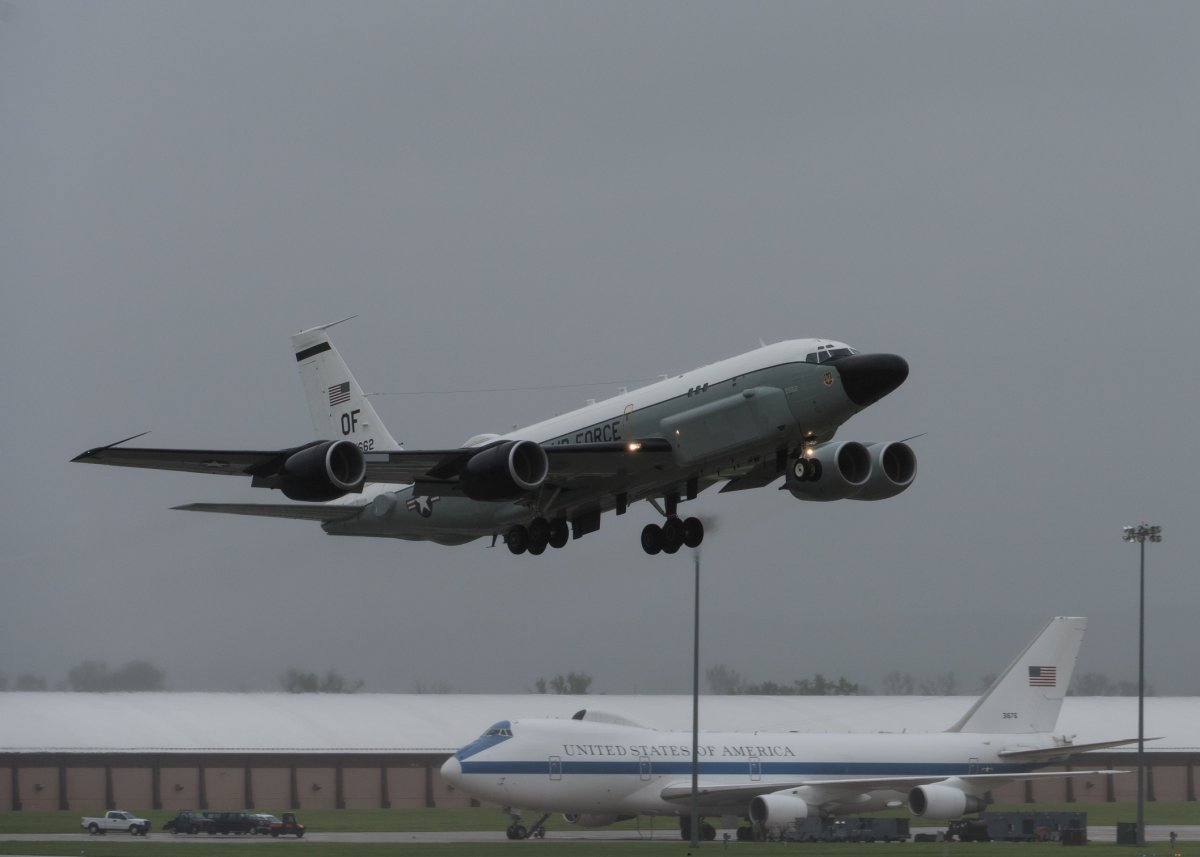Login to Continue Learning
A U.S. spy plane has flown missions to Northeast Asia for five consecutive days to monitor potential missile launches from North Korea, a nuclear-armed country that frequently tests its missiles over the Sea of Japan. These flights were confirmed by flight data.
Newsweek reached out to the U.S. Pacific Air Forces for further comment via email and attempted to contact North Korea’s embassy in Beijing but received no immediate response.
Why It Matters
North Korea, which refuses to abandon its nuclear weapons, frequently launches missiles over the Sea of Japan. It has also developed long-range missiles capable of striking the U.S. mainland with nuclear warheads. The U.S. Air Force operates a range of reconnaissance aircraft for different missions and often deploys them to Kadena Air Base in Okinawa.
Recent American spy flights come as satellite imagery revealed suspected activity at a site linked to North Korea’s nuclear program, and as leader Kim Jong Un toured a missile factory before departing for a military parade in China scheduled for Wednesday.
What To Know
Using aircraft tracking data from Flightradar24, Newsweek mapped five consecutive flights of an Air Force RC-135S reconnaissance aircraft—known as Cobra Ball—from Kadena Air Base over the Sea of Japan. The “rapidly deployable” aircraft flew northward and reached waters west of Japan’s main island of Honshu before returning to Okinawa after almost 13 hours.
The same Cobra Ball aircraft flew similar early morning missions for the next four days, supported by an aerial refueling tanker on some flights. The most recent mission on Tuesday lasted six hours without support from a tanker.
According to open-source intelligence analyst @MeNMyRC1, the Cobra Ball aircraft was deployed to Okinawa from Offutt Air Force Base in Nebraska but did not fly its first mission until August 8. It conducted two missions over the Sea of Japan on August 14 and 20.
The U.S. Air Force said the Cobra Ball fleet, currently consisting of three aircraft, conducts missions directed by the Joint Chiefs of Staff that are of national priority. Data collected is critical to developing U.S. strategic defense concepts.
What People Are Saying
The U.S. Air Force stated in a fact sheet: “The RC-135S, equipped with sophisticated sensors and communications equipment, provides America’s leaders and defense community with vital information.”
The U.S. Defense Intelligence Agency said in its missile threat assessment report: “Missile threats to the U.S. homeland will expand in scale and sophistication in the coming decade.” North Korea has successfully tested ballistic missiles with sufficient range to reach the entire Homeland.
What Happens Next
It remains unclear whether North Korea will conduct missile tests or exercises during Kim’s visit to China. The U.S. military is likely to continue deploying reconnaissance aircraft near the Korean Peninsula to monitor North Korea’s nuclear and missile activities.

A United States RC-135S Cobra Ball reconnaissance aircraft takes off from Offutt Air Force Base in Nebraska on May 8, 2019. (Senior Airman Jacob Skovo/U.S. Air Force)
It is likely that the U.S. military will continue to monitor North Korea’s activities with increased vigilance following these recent flights.



















